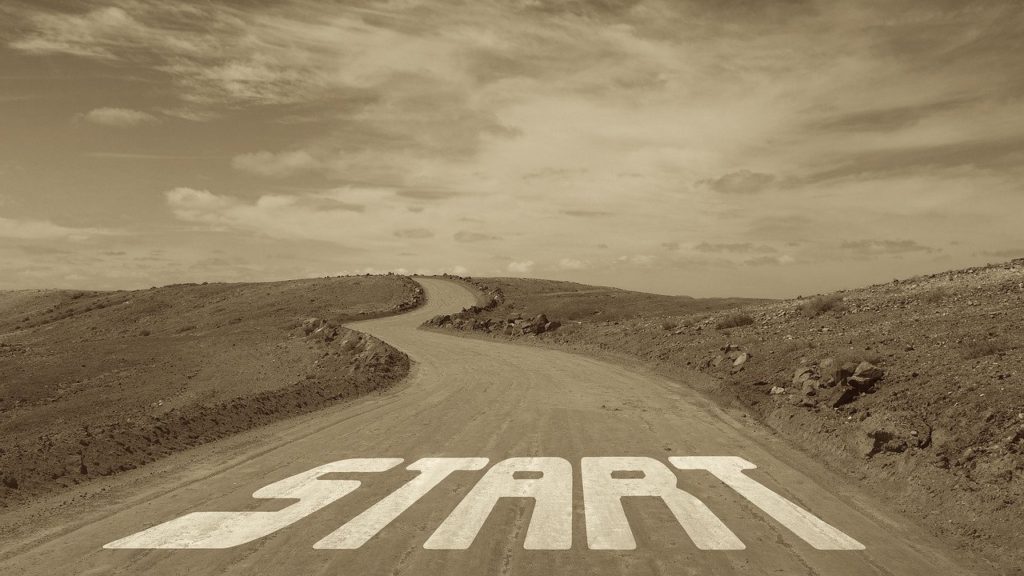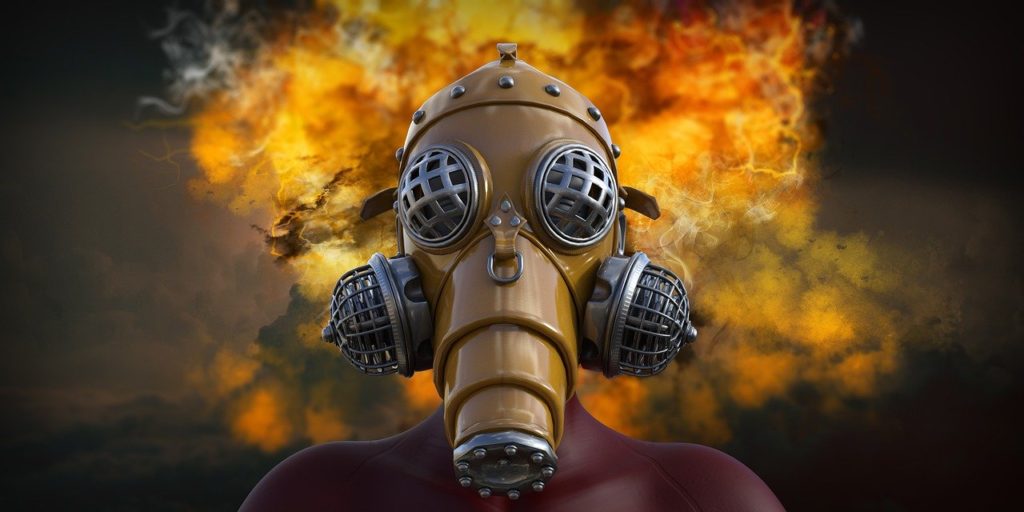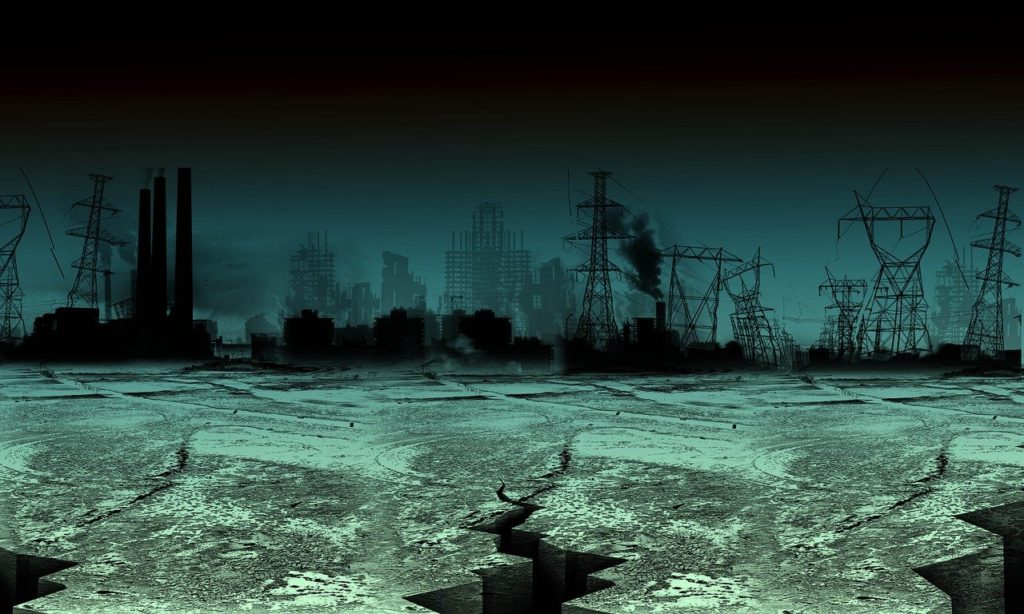Most popular articles for January 2024:
Do you have a general idea for a post-apocalyptic novel, but you’re not sure how to start writing it? Need a little boost to get the process in action?
You’re in the right place. Below, I’ve offered a series of tips and ideas to help you start a post-apocalyptic novel, and see it through to completion.
Beginnings: How to Start a Post-Apocalyptic Novel
Apocalyptic and post-apocalyptic fiction gives writers the freedom to “erase” the existing world order and create something entirely new. For readers, post-apocalyptic novels offer a thrilling escape from the humdrum routine of everyday life.

But how do you actually start writing such a book? How do you start a post-apocalyptic novel and see it through to the end? Here are five steps to get you going…
1. Make the commitment right now.
Writing a novel takes time and effort. A lot of both. As a beginning writer, the idea of writing a post-apocalyptic novel might even seem insurmountable. So let me be the first to tell you — you can do this!
You just have to commit to doing it. And now’s as good a time as any to make that commitment.
Repeat after me:
“I can write a post-apocalyptic novel, and it starts right here. I vow to work on my novel daily, writing one to two pages per day. If I do that, I’ll have a first draft in six months or less. I just have to stick with it and believe in myself.”
Better yet, make up your own affirmation script. Refer to it often, especially on those days when you’re doubting yourself or the process. If you want to write a post-apocalyptic novel (or any kind of book, for that matter) you have to commit to the work.
2. Know what’s been done before, and what hasn’t.
One of the great things about starting a post-apocalyptic book is the creative freedom it gives you.
That’s one of the things that makes this genre so appealing to writers. You can take readers into uncharted territory, by creating a scenario, setting or premise they haven’t seen before.
But before you can do that, you have to read widely within the genre. You have to know what’s been done before — and what hasn’t.
You’ll have an easier time growing your audience if you write a novel that stands apart from “the crowd,” by offering something new. So think about this, as you start writing your post-apocalyptic book.
You don’t have to read every single post-apocalyptic novel to get a sense of “what’s out there.” My advice is to read the ones that interest you, and simply review some of the others.
Visit Amazon or Barnes & Noble and do a search for post-apocalyptic fiction. Read the summaries for some of the more popular books. See what other authors are doing, and what they’re not doing. Think about how you might plug your story into this gap.
3. Choose an apocalyptic scenario or doomsday event.
Apocalyptic books do not bring about the end of the world itself. It would take a lot to actually destroy a planet. Instead, post-apocalyptic novels typically portray the end of civilization as we know it. They topple the existing world order and create something new.
Example: In Cormac McCarthy’s post-apocalyptic (and Pulitzer Prize-winning) novel The Road, society has been scorched away by some kind of planetary firestorm. McCarthy doesn’t go into a lot of detail about the origin or extent of this firestorm, and he doesn’t need to. His novel picks up in the weeks after the devastation. The world remains; but civilization has ended.
Before you can start a post-apocalyptic novel, you have to “choose your weapon.” You have to decide how you’re going to end the old world — and what the new world will look like.
But you don’t necessary have to provide a detailed account of the destruction, unless you want to.

Some authors offer a vague backstory, a sketched outline instead of a detailed picture, as in McCarthy’s The Road. Other authors take a deep dive into the “nuts and bolts” of the destruction, as in Max Brooks’s World War Z. You’re the author. You get to decide.
[Read: 9 post-apocalyptic scenarios for writers]
Just know this: You can start writing a post-apocalyptic novel without spending weeks on research. You can give readers a glimpse of the destruction, in the form of character flashback and backstory. Or, you can start your novel during the destruction and follow your characters into the post-apocalyptic phase.
You have options, so do what works best for your story and writing style. Do what excites you.
4. Turn off your internal critic and just write.
Starting a novel can bring a lot of doubt, self-criticism, and other mental baggage into the picture. You begin to question yourself and the process. You analyze every sentence that goes onto the page. You wonder if it’s good enough for publication and what others will think of it.
That’s natural … but not helpful.
When starting your post-apocalyptic novel, try to turn off your internal editor and critic. Just focus on the writing. Stay in the moment, scene by scene, and just write. Don’t worry about how “good” or “bad” your scenes and chapters might be. That’s what the second draft is for.
When writing the first draft, your primary goal is to get the story down.
During the second-draft editing process, I often revisit things I wrote during the first draft and think: Well, that’s not very good. It would be a lot better if I changed this to that … or tweaked this one part … or deleted this whole part.
It’s important to analyze, edit and improve your writing. But you’re better off saving that until the second draft — and the third, fourth, etc.
For starters, just strive to get the story down. Keep moving forward. Don’t get stuck in editorial mode. Don’t get bogged down. Keep the words flowing and the story going.
Or think of it this way:
- The first draft is creative in nature (storytelling).
- The second and subsequent drafts are analytical (editing, trimming, improving).
This kind of mindset will make it easier for you to start your post-apocalyptic novel, and to complete that all-important first draft. Try to get the story down as quickly as you can, so you don’t analyze it to death. Keep the creative fire burning until your draft is done.
5. Introduce your post-apocalyptic world gradually.
When you start a post-apocalyptic novel, you might feel the need to describe the world you’ve created in great detail. After all, a post-apocalyptic world is very different from the one we live in. An apocalypse or doomsday event wipes away the old world and replaces it with something new.
So the reader has to be told what this new world is like … right?
Right. But they don’t have to get it all at once.

Have you heard the term “info dump”? This occurs when an author supplies a large amount of information at one time, especially as background information in a narrative.
The problem is that an info dump can pull the reader out of the story. It’s almost like you’re reading a textbook or a non-fiction article, instead of a novel. In most cases, it’s better to weave in the setting and backstory bit by bit.
As you start writing your post-apocalyptic novel, resist the urge to explain everything all at once. Instead, let the reader get to know this new world gradually, chapter by chapter.
And remember … you don’t have to explain everything. It’s okay to have a little mystery in the first part of the story. In fact, your novel might be better off if you only touch on the backstory, and the let readers use their imagination to fill in the rest. (As in the Cormac McCarthy example mentioned above.)
Instead of explaining every little aspect of this new post-apocalyptic world you’ve created, show us how your characters interact with it. Show us the world through their eyes.
Trust Your Instincts and Stick With It
I’ve offered some suggestions on how to start a post-apocalyptic novel. But how do you finish? How do you keep the story going — page by page, scene by scene, and chapter by chapter — until you reach the finish line?
And what should you do if you get stuck along the way?
I’ve always thought that instinct is the writer’s most powerful tool. Writing a post-apocalyptic novel opens up a never-ending series of choices. Every chapter beginning and ending, every action sequence, every bit of character dialogue — they force you to make choices.
Should I do it this way or that way. Or some other way I haven’t even thought of?
At some point, you have to start trusting your writerly instincts. You’re the author. It’s your story. And ultimately, only you can make these scene-by-scene or chapter-by-chapter decisions.
Sure, you can solicit input from friends, family members, or beta readers. But this will likely bring even more choices into the picture. You need something to fall back on, and instincts serve this purpose well.
The best way to develop “writerly instincts” is to read a lot. Since you’re starting a post-apocalyptic novel, you’ll want to read plenty of those. But be sure to read outside the genre as well. The more novels you read, the more “ammunition” you’ll have when it comes to making those tough choices.